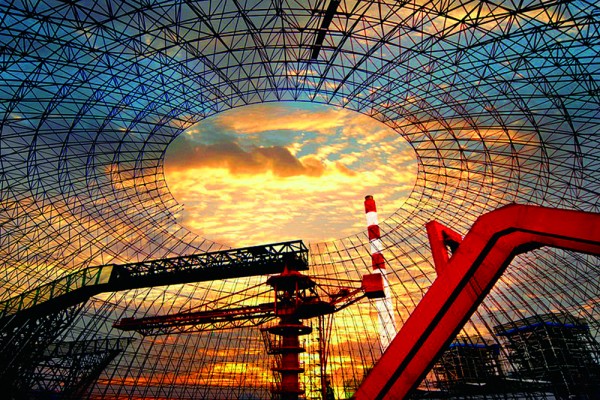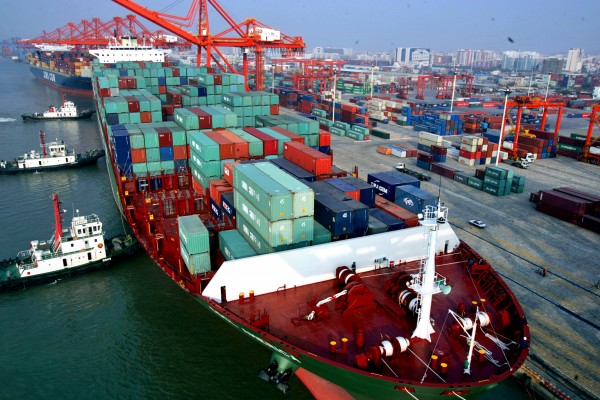Economic Development

Comprehensive Strength
In recent years, the historic opportunities have been ushered in as Pingtan Comprehensive Pilot Zone, China (Fujian) Pilot Free Trade Zone, the Core Area of the 21st Century Maritime Silk Road, Fuzhou New Area, National Independent Innovation Demonstration Zones in Fuzhou, Xiamen and Quanzhou and the National Ecological Conservation Pilot Zone are approved and established, further highlighting Fujian’s status and role in the national development plan, and providing a strong impetus to Fujian’s developing trend.
To achieve the goal of developing into a province with flexible mechanisms, competitive industries, a prosperous life and beautiful environment, Fujian is actively carrying out supply side structural reform, implementing the strategy of innovation-driven development, and accelerating industrial transformation and upgrade. The economy has been on a steady and fast growing track. In 2015, the province’s GDP grew 9% to reach RMB 2.59 trillion, ranking 11th in the Chinese mainland, while the per capita GDP stood at RMB 67,966, or USD 10,912. Fujian’s economy grew steadily in 2016. Preliminary calculation shows that the GDP amounted to RMB 2.85 trillion, an 8.4% year-on-year increase; total revenue of general public budget was up by 6.6% year on year to RMB 429.52 billion, wherein revenue of local general public budget reached RMB 265.48 billion, a 7% increase compared with last year; The fixed asset investment totaled RMB 2.29 trillion, a 7% growth on a year-on-year basis; and total retail sales stood at RMB 1.17 trillion, representing an 11% year-on-year increase.

Industrial Structure
In 2016, the ratio of primary, secondary and tertiary industry of Fujian was 8.3:48.8:42.9. The province saw continuous expansion of industrial output and improvement in industrial structure. One third of the added value of industrial enterprises above the designated size is created by the three pillar industries, namely, electronics, machinery and petrochemical. Those key enterprises in traditional industries such as textile, garment and food have adopted internationally or domestically advanced technologies and equipment. The new economy represented by new industrial forms, new industries and new business models maintains a relatively fast growth, and hi-tech industry keeps a double-digit increase. With an increasingly important role in supporting economic development, the contribution of the services sector to GDP growth reached 52.8%.

Infrastructure
The province saw steady improvement in modern comprehensive transportation network, accelerating construction of critical energy bases in the coastal region, and significant enhancement in municipal infrastructure and comprehensive communications service capability.
By 2015, the province’s total mileage of railway in operation reached 3,197 km, including 1,569 km long high-speed railway; the total mileage of highway open to traffic was 104,585 km, with 5,002 km long expressways. Within the province, all cities are linked by high speed rail, all counties are connected by the expressways, every township has access to trunk road, and buses run through each single village. In 2015, ports in Fujian handled more than 500 million tons of cargo and 13.64 million TEU of container throughput. The airport passenger throughput was 38 million persons, passenger turnover was about 91.52 billion passenger-km (pkm), and freight turnover was about 545.1 billion ton-km (tkm).
And the province’s energy supply capability is getting stronger. Ningde nuclear power plant, Fuqing nuclear power plant and a number of thermal and wind power projects have become fully or partially operational. Last year’s total installed electricity capacity reached 49.3 million kilowatts.
Meanwhile, the telecommunications industry develops rapidly. In 2015, the sector recorded RMB 84.87 billion business revenue.Telephone and internet penetration rate were 134.7% and 104.1% respectively.

Ownership Structure
Fujian boasts a vibrant private sector. In 2015, the output of private sector accounted for 67% of the provincial economy. Private investment, involved in almost every sector of the national economy, made up 59.3% of fixed asset investments in the province. Private enterprises played a major role in foreign trade as well. Their trade volume accounted for 47.1% of the provincial total. As a renowned ancestral home of overseas Chinese and compatriots in Hong Kong and Macao, Fujian has held World Fujian Businessmen Congress and other various forums to attract investors of Fujian origin, so as to inject impetus to economic development.
The influence of the state-owned economy continues to strengthen. In 2015, non-financial state-owned companies in the province recorded RMB about 3.01 trillion in assets, RMB 761.49 billion in revenue, RMB 39.54 billion in profit and RMB 40.43 billion in tax payment. Eight non-financial state-owned companies, including Xiamen C&D Corporation Limited, Xiamen ITG Holding Group Co., Ltd, Zijin Mining Group Co., Ltd, Xiamen Xiangyu Group, Fujian Energy Group Co., Ltd, and Fujian Sangang (Group) Co., Ltd, are listed as the top 500 companies in China in 2016. Fourteen state-owned companies, including Fujian Provincial Communication Transportation Group Co., Ltd and Iport Group, are listed as top 500 companies in the service sector in China.

Economy with Local Emphasis
Regional industrial clusters in the province have taken shape. In 2015, the added value of 26 key industrial clusters reached RMB 523.37 billion, accounting for 49.3% of the provincial industrial output. Ten industrial clusters with output exceeding RMB 100 billion have been established, namely, Xiamen photoelectric, Fuzhou photoelectric, Meizhou Bay petrochemical, Quanzhou textile and garment, Changle textile and chemical fiber, Zhangzhou agricultural products processing, Quanzhou construction ceramics and bathroom plumbing, Quanzhou sportswear, Quanzhou footwear, and Quanzhou machinery equipment. Fourteen key industrial chains, including petrochemical, flat panel display and LED, have basically been in place. The traditionally competitive industries in Fujian are textile, footwear and garment.
Fujian prides itself in the ocean economy. It is stepping up effort to build the Straits Blue Economy Pilot Zone. In 2015, the total output of its ocean economy reached RMB 687.8 billion, ranking 5th among its coastal counterparts in China. The province produced 7.34 million tons of aquatic products, and became the biggest foreign currency earner by aquatic products export in China. The overall economic strength of ocean fishery is ranked first in the country. The industrial chains of nine products, including large yellow croaker, grouper, eel, prawn, oysters, abalone, seaweed, kelp and sea cucumber, are growing constantly.
The development of the county economy in Fujian is on an upward trend. In 2015, the GDP of all counties grew 9.3% to roughly RMB 1.46 trillion. Six counties or county level cities rank among the top 100 in China in terms of economic strength and basic competitiveness. To be specific, Jinjiang ranks 5th, Fuqing 50th, Nanan 54th, Shishi 60th, Minhou 68th and Changle 92nd.


